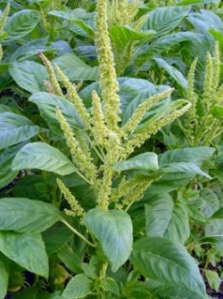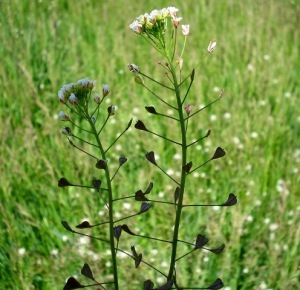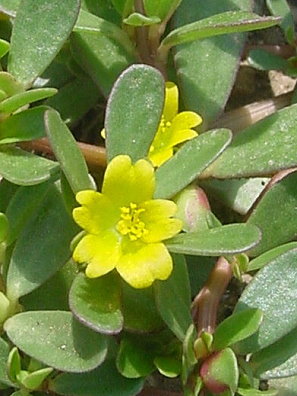Sunday, May 26, 2013
Safety is being enforced
If you haven't already noticed, there is law enforcement here in Pine Valley this weekend, and there will be throughout the summer. The officiers have warned that whatever excuse you might have, you will still get a ticket if you are speeding or otherwise being unsafe.
This applies to any vehicle--4 wheelers included. If you have questions about Pine Valley safety regulations for 4 wheelers, click on the safety tab of this blog.
As it says on the safety page--COME OFTEN! ENJOY YOURSELF! and BE SAFE!
Memorial Day Weekend
Memorial Day weekend church attendance Pine Valley--there were 640 people....wonder what percentage attendance that is? :)
Whether full time, part time or just visiting, everyone is always invited to the Pine Valley meetings, starting at 10:00 each Sunday. ...and on almost every other Sunday, there is even room for you to sit inside :)
Thursday, May 23, 2013
Some Pine Valley Edible Plants from Laura Bergeson
 Dandelions! The whole plant is edible, though it is
usually less bitter in the spring. It is a powerhouse of vitamins C,
A , and betacarotene. Eat the leaves and flowers in salads, or steam
the leaves like spinach.
Dandelions! The whole plant is edible, though it is
usually less bitter in the spring. It is a powerhouse of vitamins C,
A , and betacarotene. Eat the leaves and flowers in salads, or steam
the leaves like spinach. Elderberries
An
elderberry shrub can grow easily grow about 10 feet tall and will
yield tons of food. These are easiest to identify in the spring as
they blossom with white clustered flowers that resemble an umbrella.
The dried flowers make a healthful tea. Harvest the berries when
they’re ripe around September, as Elderberries are known for their
flu and cold healing properties. You can make jelly, syrup or
extracts from the elderberries, but don't eat them raw.
Elderberries
An
elderberry shrub can grow easily grow about 10 feet tall and will
yield tons of food. These are easiest to identify in the spring as
they blossom with white clustered flowers that resemble an umbrella.
The dried flowers make a healthful tea. Harvest the berries when
they’re ripe around September, as Elderberries are known for their
flu and cold healing properties. You can make jelly, syrup or
extracts from the elderberries, but don't eat them raw.
Pinon
pine needles can be steeped in hot water to make a drink that is rich
in vitamin C and will stave off scurvy. Pine nuts have healthful
oils and protein.

Red
Clover blossoms can be eaten fresh or steeped in hot water for tea.
You can toss both the green leaves and blossoms into a salad, but be
careful if you take blood thinners, as this plant has natural
coumadin.

Cattails
are usually found near the edges of freshwater wetlands. Cattails
were a staple in the diet of many Native American tribes. Most of a
cattail is edible. You can boil or eat raw the rootstock, or
rhizomes, of the plant. The rootstock is usually found underground.
The best part of the stem is near the bottom where the plant is
mainly white. Either boil or eat the stem raw. Boil the leaves like
you would spinach. The corn-dog looking female flower spike can
be broken off and eaten like corn on the cob in the early summer when
the plant is first developing. It actually has a corn-like taste to
it.

Plantain
Is another one of those plants that seem to thrive right on the edge
of gardens and driveways, but it’s also edible. Pick the green,
rippled leaves and leave the tall flower stems. Blanch the leaves and
sauté with some butter.

Pigweed
is a valuable plant. The whole thing – leaves, roots, stem, and
seeds are edible. The Amaranth seed is small and very nutritious and
easy to harvest. It is used to make flour for baking uses. Roasting
the seeds can enhance the flavor. You can sprout the raw seeds to
use them in salads, and in sandwiches. Young leaves can be eaten raw
or cooked like spinach, sautéed, etc. Fresh or dried pigweed leaves
can be used to make an herbal tea.

Shepherd's Purse's young leaves can be used raw in salads, or cooked in soups, in mixed cooked greens or in any dish that calls for cooking greens. Although the leaves may be eaten throughout the summer, the mature leaves have a peppery taste that does not appeal to all palates.

Mullein
leaves and flowers are edible. The flowers are fragrant and taste
sweet, The leaves are furry and taste slightly bitter. This plant is
best known as an herbal tea and can be consumed as a nutritious
beverage containing vitamins B2, B5, B12, and D, choline, hesperidin,
paraaminobenzoic acid, magnesium, and sulfur. Mullein tea is
primarily valued as an effective treatment for coughs and lung
disorders. The native people dried the leaves and smoked them to
relieve lung ailments. The pioneers valued mullein as a poultice to
help glandular problems, especially mastitis.

Purslane
can be considered an obnoxious weed but it can provide much needed
vitamins and minerals in a survival situation. Ghandi actually
numbered purslane among his favorite foods. It’s a small plant with
smooth fat leaves that have a refreshingly sour taste. Purslane grows
from the beginning of summer to the start of fall. You can eat
purslane raw or boil it to remove the sour taste. It is one of the
highest vegetable sources for omega 3's.

Sheep
sorrel is native to Europe and Asia but has been naturalized in North
America. It’s a common weed in fields, grasslands, and woodlands.
and flourishes in highly acidic soil. Sheep sorrel has a tall,
reddish stem and can reach heights of 18 inches. It contains oxalates
and shouldn’t be eaten in large quantities. You can eat the leaves
raw. They have a nice tart, almost lemony flavor.

Wild
mustard ! You can eat all parts of the plant- seeds, flowers, and
leaves.
Answer to the plant queston
A couple of people identified this "cute" little plant that grows here in Pine Valley as Death Camus, (Toxicoscordion venenosum--also named Mountain Death Camus or Foothill Death Camus.) Because of their appearance, they have sometimes been confused with wild onion, but these are extremely dangerous for both humans and livestock (and I'm assuming for all animals.) Good to know; I will definitely NOT try to propagate them for my garden!
Wednesday, May 22, 2013
Pine Valley Children's Summer Activities
Pine Valley is the ideal place to be during the summer for anyone, but especially if you are a child! We want the children who come to visit or spend their summer here to have memories and fun, so we are doing something to help.
Every Tuesday from June 4th through August27th we will be having Mid-Week Children's Activities. We will meet at the Tithing House yard at 10:00am (unless otherwise announced) and will play and have activities until 11:30am.
ALL CHILDREN AGES 4-11 ARE WELCOME!!!!
(These activities are NOT limited to members of the LDS Church in any way.)
We hope ALL children will come join us for the fun. We DO ask, though, that for safety reason, any child under the age of 6 be accompanied by an adult family member OR older sibling who is capable of helping with restroom issues. We will NOT be assisting your children inside the restroom, so they need to have a family member there who can help with that and any other issues small little ones may have.
We have lots of fun activities planned, games day, skit day, art day, nature walks, hikes, movie day, talent show, possible pet show...lots of fun things.
Each child will need to be registered by a parent so we have a phone number for emergencies, allergy info, and other information helpful to us as we play and have fun. NO child will be allowed to leave without an adult signing them out for safety reasons. It is Pine Valley but our children are too precious to risk. We appreciate your cooperation with that.
Again.....ALL CHILDREN AGES 4-11 ARE WELCOME!!! The Fun starts June 4th at 10:00 am Hope to see you there!
Call Sue Woodbury with any questions...(912) 596-0723
Pine Valley is the ideal place to be during the summer for anyone, but especially if you are a child! We want the children who come to visit or spend their summer here to have memories and fun, so we are doing something to help.
Every Tuesday from June 4th through August27th we will be having Mid-Week Children's Activities. We will meet at the Tithing House yard at 10:00am (unless otherwise announced) and will play and have activities until 11:30am.
ALL CHILDREN AGES 4-11 ARE WELCOME!!!!
(These activities are NOT limited to members of the LDS Church in any way.)
We hope ALL children will come join us for the fun. We DO ask, though, that for safety reason, any child under the age of 6 be accompanied by an adult family member OR older sibling who is capable of helping with restroom issues. We will NOT be assisting your children inside the restroom, so they need to have a family member there who can help with that and any other issues small little ones may have.
We have lots of fun activities planned, games day, skit day, art day, nature walks, hikes, movie day, talent show, possible pet show...lots of fun things.
Each child will need to be registered by a parent so we have a phone number for emergencies, allergy info, and other information helpful to us as we play and have fun. NO child will be allowed to leave without an adult signing them out for safety reasons. It is Pine Valley but our children are too precious to risk. We appreciate your cooperation with that.
Again.....ALL CHILDREN AGES 4-11 ARE WELCOME!!! The Fun starts June 4th at 10:00 am Hope to see you there!
Call Sue Woodbury with any questions...(912) 596-0723
Sunday, May 19, 2013
Pine Valley Service Angels
May 18th was a busy day of service for many in the Valley. Thanks to these good men for their hard work in serving residents of the community. Pine Valley is a wonderful place to live and serve! Thanks for the dedication of the givers and receivers! Bob Dalley
Thursday, May 16, 2013
Can you identify this plant?
This isn't a trick question. I have been wondering what this plant is. It grows on the more moist parts of the connecting trail between Forsyth and Whipple and nowhere else that I have noticed. It comes up from a bulb, almost like hyacinth. When the blossoms open, they are a pale yellow--not too showy, but cute. Anyone know what it is?
 |
| Just as the blossom head begins to form |
 |
| Blossoming |
Animal Response Training
We had a GREAT training last night for Animal Response Training. Almost 40 CERT and community members were there to hear some very informative and interesting instruction on how to care for small and large animals in the case of emergency. There will be a two part CERT training on the subject on June 1. If anyone is available to receive this specialized training, contract Gene Phillips, our CERT director and he will get you set up for the course.
Subscribe to:
Comments (Atom)











